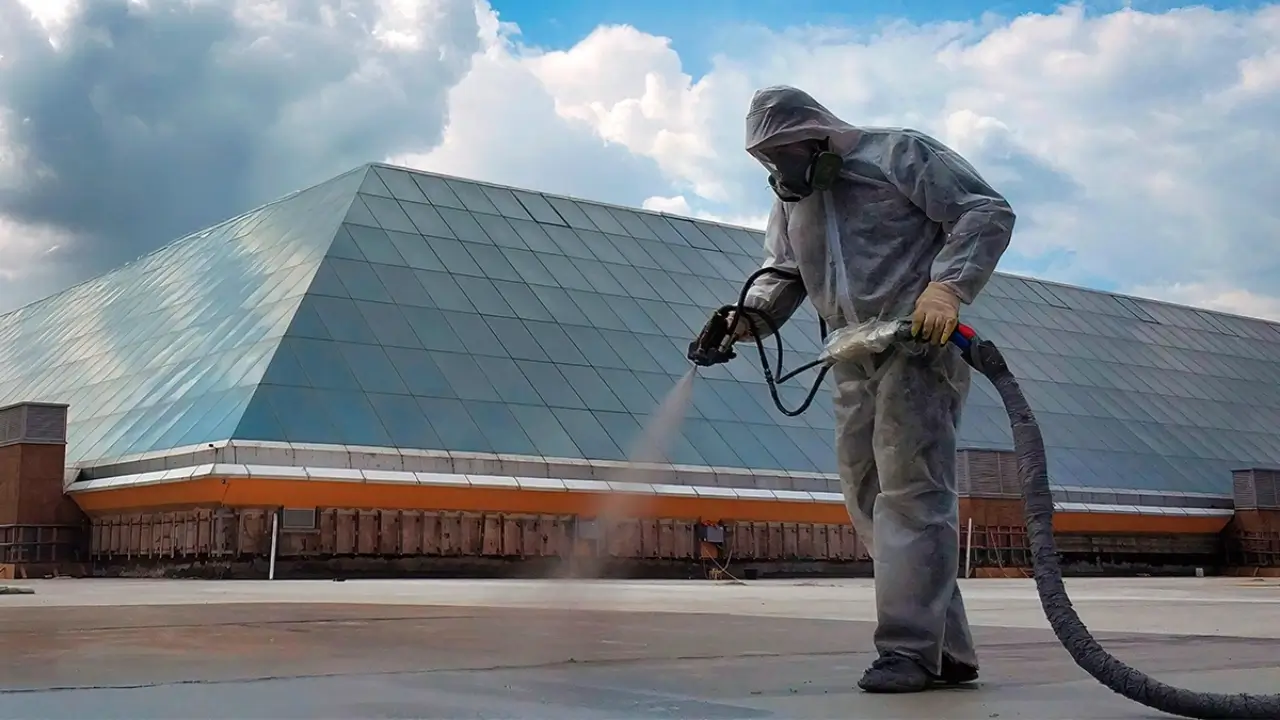
As a property owner or construction professional, viewing waterproofing as merely an “extra expense” can lead to severe long-term financial and structural consequences. Water is one of the most destructive forces a building can face. It seeps into concrete, causes cracks through freeze-thaw cycles, corrodes reinforcing steel, and promotes dampness and mold. These issues not only compromise the structural integrity of the building but also negatively impact the health and comfort of its occupants.
So, what exactly happens if you neglect waterproofing? What risks are you exposing your property to? Let’s explore this critical subject in depth.
1. Structural Damage to Load-Bearing Elements
In structures without proper waterproofing, water gradually infiltrates the concrete. In reinforced concrete buildings, moisture accelerates the corrosion of steel reinforcement. As the steel oxidizes, it expands, exerting pressure on the surrounding concrete and causing it to crack. These cracks allow even more water ingress, creating a vicious cycle.
This is far more than an aesthetic concern — it directly compromises the building’s structural integrity, reduces its seismic resilience, and can eventually lead to partial or total structural failure.
2. Moisture, Mold, and Persistent Odors
In water-infiltrated structures, particularly basements and ground floors, dampness becomes evident quickly. Such humid conditions provide the perfect environment for mold and mildew to flourish. Wall discoloration, blistering paint, and crumbling plaster are common signs. Over time, persistent musty odors can become embedded in the space.
Beyond aesthetics, mold spores pose significant health risks, especially for individuals with asthma or respiratory conditions.
3. Thermal Inefficiency and Rising Energy Costs
Waterproofing not only prevents water ingress — it also reduces the formation of thermal bridges. In uninsulated external walls and roof assemblies, moisture increases heat transfer. Damp walls lose heat more rapidly, increasing heating demand in winter and cooling demand in summer.
As a result, poor waterproofing leads to energy inefficiency and high utility bills. That shocking electricity or gas bill at the end of the month? Moisture might be to blame.
4. Damage to Surface Finishes and Floor Coverings
Surface finishes such as ceramic tiles, hardwood flooring, paint, and plaster are highly sensitive to water. Water intrusion can cause them to peel, delaminate, or detach over time. In wet areas like bathrooms, kitchens, and terraces, moisture beneath tiles can lead to hollow sounds, water seepage to lower floors, and eventual detachment.
Repairing or replacing damaged finishes repeatedly often costs far more than a one-time professional waterproofing application.
5. Water Leakage to Lower Floors and Disputes with Neighbors
Inadequate waterproofing in wet zones (bathrooms, toilets, kitchens) often leads to water dripping through to the unit below. This results in ceiling stains, peeling paint, and dampness in neighboring apartments — a common cause of tenant complaints, strained relationships, and even legal disputes.
Waterproofing is not only a protection for your own unit — it is a shield for the entire building and those who live around you.
6. Frequent Repairs on Pools, Roofs, and Terraces
Open areas such as terraces, balconies, and rooftops are especially vulnerable to water ingress. Without proper waterproofing, rainwater penetrates the surface layers, leading to cracks due to freeze-thaw cycles. In swimming pools, poor waterproofing results in a constantly lowering water level, necessitating frequent refilling.
These recurring problems lead to unnecessary water waste, high maintenance costs, and major repair work in the long run.
7. Reduced Property Value and Resale Challenges
Structural reliability is a major determinant of a property’s market value. A damp, moldy building with visible deterioration is unlikely to attract serious buyers or tenants. In fact, its valuation may be downgraded by appraisers.
Lack of waterproofing can become a dealbreaker in real estate transactions, turning away potential buyers or lowering your bargaining power.
8. Reduced Earthquake Resistance
In earthquake-prone regions like Turkey, structural durability is critical. Corroded rebar in non-waterproofed concrete significantly weakens the building’s seismic resistance. This increases the risk of severe damage — or collapse — during an earthquake.
In short, poor waterproofing indirectly puts human lives at risk.
9. Legal and Insurance Issues
In many countries, including Turkey, waterproofing has become a legal requirement for newly constructed buildings. Since 2018, the TS 11758-2 standard and associated building inspection regulations mandate waterproofing for below-grade walls, foundations, and roofs.
Additionally, some insurance providers may reject damage claims if the building lacks proper waterproofing. This leaves the property owner with no recourse for compensation in the event of loss.
Think of waterproofing as the immune system of your building. Just as a strong immune system protects the body from disease, quality waterproofing shields your building from deterioration. It extends service life, reduces maintenance costs, and enhances the comfort and safety of occupants.
The return on investment is not only financial — it’s structural, environmental, and personal.
If your building is not yet waterproofed, it’s not too late. With professional support from Dryfix, you can eliminate existing risks and reinforce your structure for decades to come.
Remember: Water always leaves a mark. But with proper waterproofing, it’s never allowed to enter.
